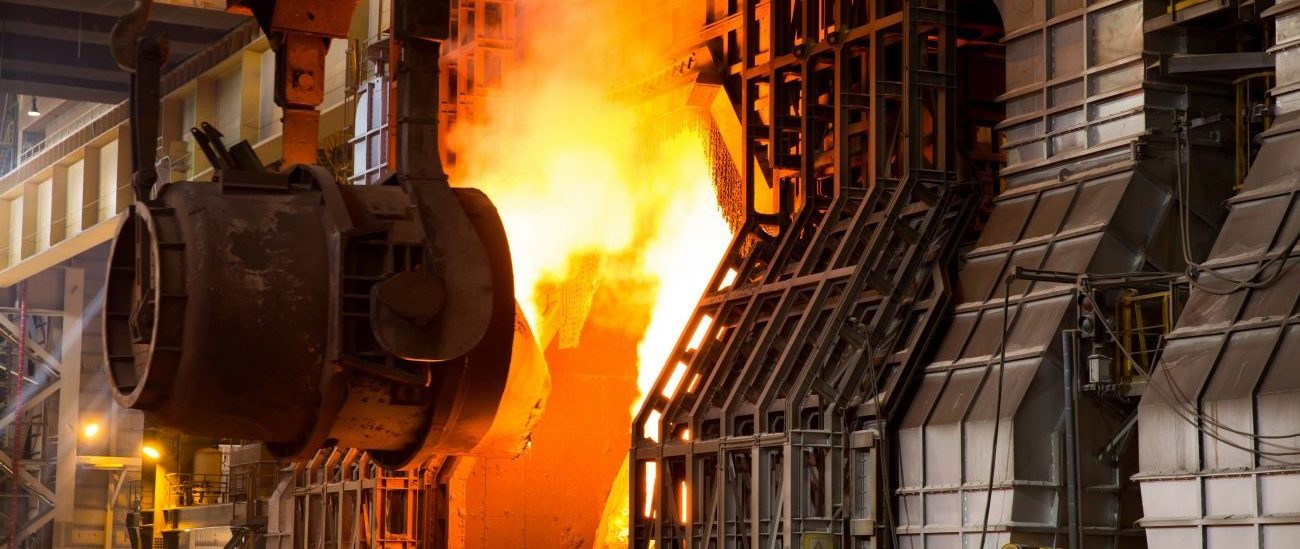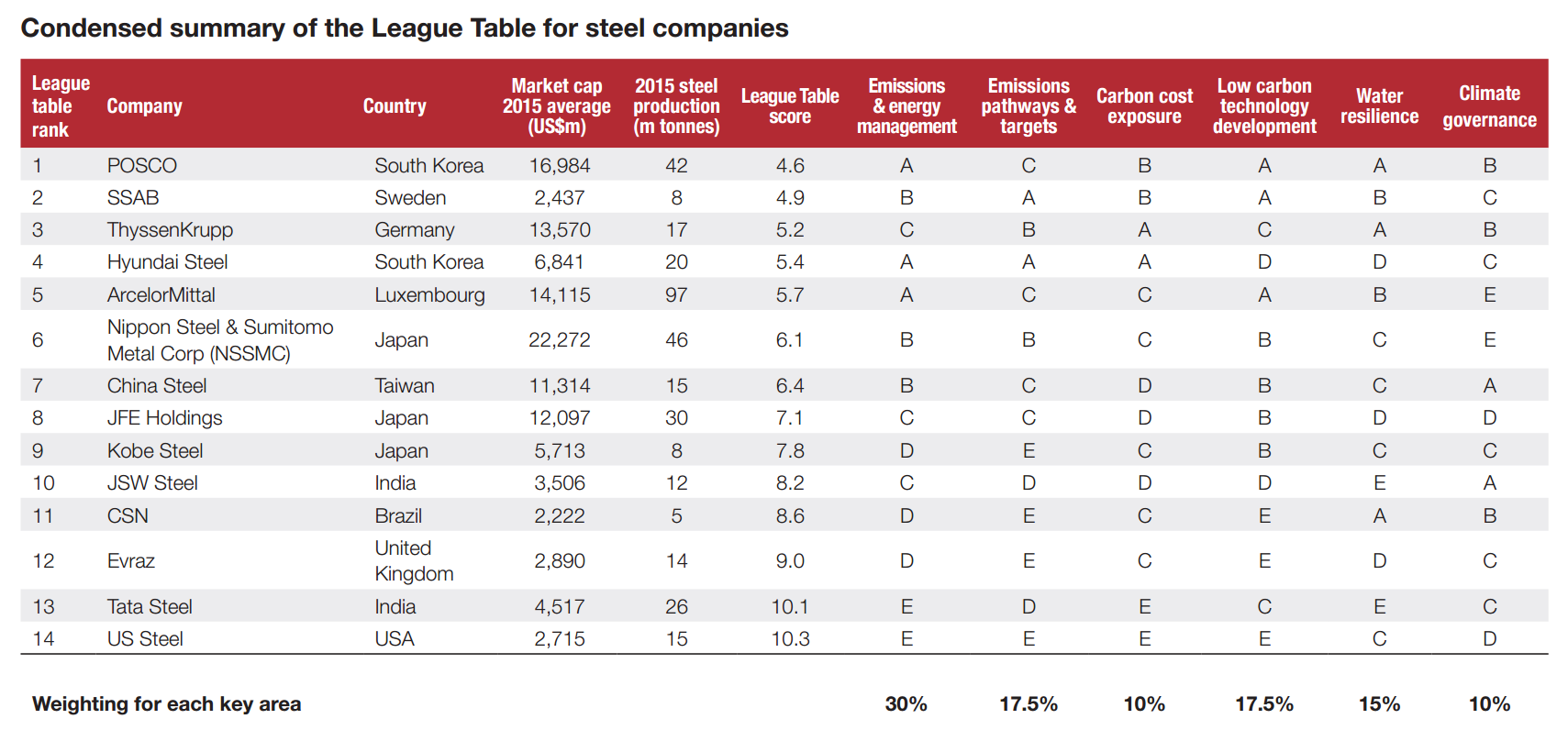The steel industry currently contributes around 6-7% of global greenhouse gas (GHG) emissions, considered by many to be one of the main causes of global warming. While many governments and businesses around the world remain committed making the appropriate changes to their production lines to see no more than a 2 degrees Celsius increase, the steel industry is lagging behind other industries in developing methods to meet these goals.
In its October 2016 “Nerve of Steel” report, the Carbon Disclosure Project, or CDP, found that steel companies had quite a ways to go in order to meet targets set by the Paris Agreement – the industry as a whole would need to reduce emissions by 70% by 2050. While their report found that most companies were not doing enough to meet these targets, some companies, like POSCO, have been forging ahead with new technologies for more sustainable production.
Why are Reductions in Carbon Emissions Important?
In 2015, nations around the world met at the United Nations Climate Change Conference to negotiate the Paris Agreement. The goals of the Paris Agreement were to keep global warming below 2 degrees Celsius while also calling for zero net GHG emissions in the second half of the 21st century.
A 2-degree increase in global temperature is generally agreed upon by scientists to be the tipping point at which numerous problems arise including droughts, floods, and reductions in crop yields. However, many scientists also believe that if carbon emissions are not curbed quickly, and drastically, temperatures could rise by almost 6 degrees Celsius this century.
Due to the increasing urgency of curbing emissions, governments, businesses, and policymakers around the globe are working to find ways to cut GHG. To help inform this process, CDP transforms environmental performance data from cities, states, and businesses into detailed analysis on critical environmental risks, opportunities and impacts.
[clickToTweet tweet=”The CDP’s “Nerves of Steel” report shows how industry leaders like POSCO are leading the way toward more sustainable development.” quote=”The CDP’s “Nerves of Steel” report shows how industry leaders like POSCO are leading the way toward more sustainable development.” theme=”style6″]
Their “Nerves of Steel” report on the steel industry’s work to cut GHG emissions found few bright spots. The industry as a whole continues to be the main contributor of global carbon emissions with only a few companies, like POSCO, stepping forward to create more sustainable steel production technologies.
Objectives and Findings of the CDP Report
CDP’s “Nerves of Steel” report found that overall progress in reducing emissions and energy use was limited and uneven across the industry. They found that in the past seven years more companies had increased their emissions intensity and energy intensity than had reduced them. Because of this lack of progress, they found that the steel industry was responsible for between 6-7% of total global emissions. Also, in order to meet Paris Agreement objectives, the industry as a whole would need to reduce emissions by a staggering 70% by 2050.
Drew Fryer, a Senior Analyst at Investor Research at CDP noted that “The steel industry will have to play a huge part in achieving the 2-degree scenario laid out in the Paris Agreement. However, there has been no progress in reducing its emissions over the past decade. Steelmakers need to prioritize funding of a technology transformation to reduce emissions in order to ensure targets are met.”
Despite the grim outlook on the industry as a whole, CDP did highlight several companies that were working hard toward creating more sustainable steel production technology – among those top performers were POSCO, SSAB, ThyssenKrupp, and Hyundai Steel. See the table below for a full listing of CPD’s rankings.
How POSCO is Leading the Steel Industry in Sustainable Steel Production
CDP ranked POSCO first among all steelmakers for its work to produce steel through more sustainable processes. They noted that POSCO performed strongly across most key areas with below average emissions intensity. Also, unlike several other steelmakers, POSCO demonstrated an ability to reduce its emissions intensity significantly in recent years.
[clickToTweet tweet=”POSCO’s work to limit emissions has proven that more sustainable production can also be more competitive.” quote=”POSCO’s work to limit emissions has proven that more sustainable production can also be more competitive.” theme=”style6″]
While the report placed a strong focus on the industry not focusing on targets to limit global warming (six out of the 14 companies did not even publish targets beyond 2016), CDP noted that POSCO’s targets remain consistent with the goal to cut emissions significantly enough to reach the Paris Agreement objectives.
In particular, CDP highlighted POSCO’s FINEX technology that was developed and commercialized to provide incremental emissions reductions from steelmaking by eliminating sintering and coke oven processes. They also noted that the technology has the potential to be combined with carbon capture & storage (CCS) due to high concentrations of CO2 in waste gases, POSCO’s other active projects to separate and capture CO2, and their early stage work on carbon capture & use (CCU) and hydrogen-based steelmaking.

POSCO’s technological advancements in sustainable steel production have helped it reduce emissions while becoming more competitive.
In addition to these developments, POSCO continues its work to make its factories run smarter and more efficiently. AI and IIoT technology are helping to improve product quality for POSCO’s customers while also reducing waste and pollution. In addition, to be recognized by CDP as a leader in the steel industry, POSCO’s efforts have also been recognized by the Corporate Knights’ Global 100 list (#1 in Metals and Mining), and they have also been listed on the Dow Jones Sustainability Index for 12 straight years.
As the world works toward hitting emission reduction targets, governments, policymakers, and industry leaders must step forward to lead. POSCO’s work to limit emissions has proven that more sustainable production can also be more competitive.
*Cover image courtesy of the World Steel Association
Don’t miss any of the exciting stories from The Steel Wire – subscribe via email today.

